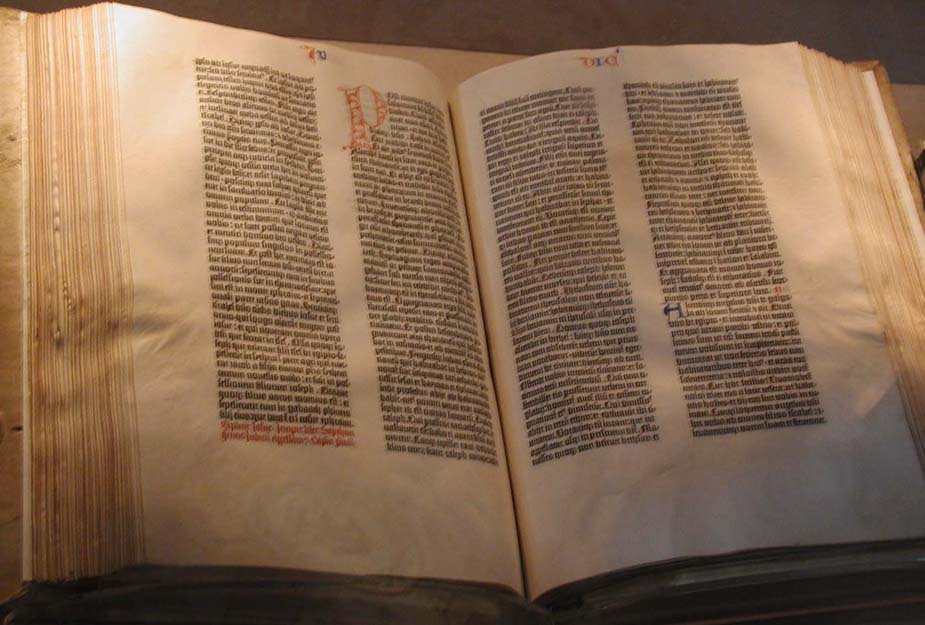Does the New Testament Misquote the Old Testament?
by Paul Copan

[gview file=”http://www.difa3iat.com/wp-content/uploads/2014/06/Does-the-New-Testament-Misquote-the-Old-Testament.pdf” save=”0″]
Perhaps you’ve wondered why New Testament (NT) writers appear to take Old Testament (OT) verses out of context to make them fit their theology about Jesus’ teaching or ministry. Critics cry foul and charge that such “fabricated predictions” referred to something other than a coming Messiah. For example, the context of Hosea 11:1 (“Out of Egypt I called My son”) referred to Israel’s exodus from Egypt, but Matthew 2:15 says that the “Son” was Jesus coming from Egypt. Isaiah 7:14 (“the virgin will conceive, have a son”) directly concerned King Ahaz’s time, when a “sign child” would be born within Isaiah’s lifetime (7:15–16; 8:4), but Matthew 1:22–23 says Mary was the virgin fulfilling the Isaiah passage. Rachel’s weeping in Jeremiah 31:15 probably referred to mourning over Judah being taken into exile (Babylon) in 586 b.c., but Matthew 2:18 speaks of weeping mothers after Herod’s capricious decree to kill all boys under two in Bethlehem (where Rachel was buried).
Frequently critics—and Christians too—think prophecy means “prediction” and fulfillment means “realization of a prediction”; from this, critics conclude “fabricated predictions.” However, this charge rests on a great mistake, and sometimes Christians become confused by it.
First, if the NT writers “plundered” the OT for proof texts, why, for instance, didn’t Luke—who mentioned the virgin birth—quote Isaiah 7:14 (as Matthew did)? The same could be asked about other such passages.
Second, Jewish interpretation of the OT during Jesus’ day viewed “fulfillment” more broadly, as more varied and nuanced. The literal approach was only one method.
Third—and most importantly—the word “fulfill” (plēroō) in the NT is used to portray Jesus as bringing to full fruition OT events or experiences (the exodus, covenant), personages (Jonah, Solomon, David), and institutions (temple, priesthood, sacrifices, holy days). “Fulfill” doesn’t necessarily (or even primarily) refer to the mere fulfillment of a prediction. Rather, a theological point is being made: many OT events and institutions—usually related to Israel—foreshadow something greater in Christ and the new community He called together (e.g., Christ’s calling 12 disciples, reminiscent of Israel’s 12 tribes). Jesus is the true, beloved Son that Israel failed to be (Hs 11:1; cp. Mt 2:15; Lk. 3:22), the shepherd Israel’s leaders weren’t (Ezk. 34; cp. Jn 10:1–18), and the genuine (“true”) fruit-bearing vine Israel wasn’t (Ps 80:8, 14; Is 5:1–7; cp. Jn 15:1–11). In His ministry, Jesus reenacted the history and experiences of Israel—but on a higher plane (e.g., 40 days of testing in the wilderness, giving a new “law” from a mountain in Matthew 5–7, being in the “belly” of the earth for “three days and three nights”). He took over Israel’s destiny and role, bringing it to fulfillment. The Law of Moses has a handful of messianic predictions, but Jesus’ fulfilling the Law (Mt 5:17; Lk 24:44) refers to His bringing it to completion.
Of course, there are predictions regarding the Messiah’s birthplace (Mc 5; cp. Mt 2:5), the Messiah’s death and atonement (Is 53), and a coming prophet and messenger (Dt 18; Mal 3). But fulfillment of the OT generally refers to the broader idea of perfectly embodying, typifying, epitomizing, or reaching a climax. For example, Jesus (citing Is 29:13) said to unbelieving Jews of His day, “Hypocrites! Isaiah prophesied correctly about you when he said: ‘These people honor Me with their lips, but their heart is far from Me’ ” (Mt 15:7–8, emphasis added). Of course, Isaiah didn’t literally predict that Jesus would deal with hostile religious leaders; rather, Jesus was using the situation from Isaiah’s time to epitomize, embody, and typify the same situation in His own day. This was typical of how Jews spoke of “fulfillment”—a this-is-that method called pesher: “This situation is a fulfillment or embodiment of that Scripture.”
The NT writers weren’t immoral or ignorant. They didn’t illegitimately rip passages out of their context and deviously reduce them to messianic predictions. And they were well aware that OT writers (such as Hosea) were often commenting on events in Israel’s past (such as the exodus in 11:1, “Out of Egypt I called My son”) or events in their own day. But NT writers (and Jesus) interpreted the OT in a Christo-centric manner: Jesus is the embodiment or completer of foreshadowed OT historical events, images, and personages. While fulfillment includes literal predictions of Christ and the new covenant, it goes far beyond to a richer theological embodiment of what the OT foreshadowed.
[1]
[1]Cabal, T., Brand, C. O., Clendenen, E. R., Copan, P., Moreland, J., & Powell, D. 2007. The Apologetics Study Bible: Real Questions, Straight Answers, Stronger Faith (1408). Holman Bible Publishers: Nashville, TN
